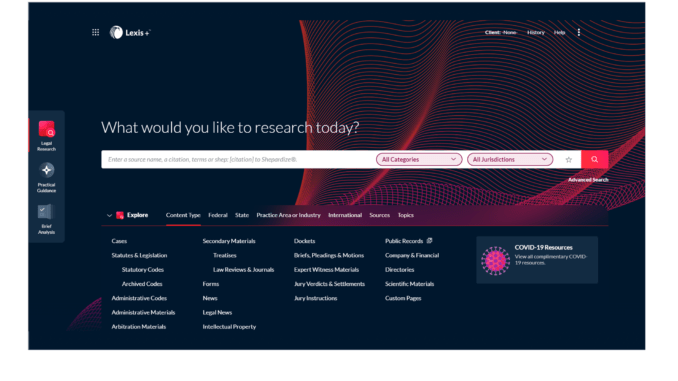
LexisNexis has in effect relaunched its main research platform with the arrival of Lexis+, a redesigned suite of tools with 11 new added functionalities. This now supersedes the Lexis Advance system and will officially be opened up to lawyers after an initial testing period with law students in the US.
Along with the mix of added capabilities (see list below), the Lexis+ platform has had a heavy focus on user experience and user interface improvement, taking into account that junior lawyers and PSLs may spend many hours sitting in front of this system.
Jeff Pfeifer, Chief Product Officer, LexisNexis, told Artificial Lawyer: ‘We started this a little over a year ago and the last mile was in the middle of the pandemic. Lexis Advance has been in the market for 9 years and we saw an opportunity to go beyond that, to rethink the design and user experience.’
‘This will be the premium solution [of LexisNexis’ legal research suite] and it will start in the US,’ he added.
In terms of the design, he explained: ‘Do products have to be dull and boring? The aim was to make a unified product experience. [What we have now is a] cool new design and the clients like it.’
In terms of some of the new features, here’s a few highlights:
- Legal Research
‘Search the most comprehensive collection of case law, statutes, and regulations, plus secondary sources and practical guidance, with the most streamlined research experience designed to surface relevant results, definitive data, and industry insights tailored to your specific needs every time.
- Lexis Answers
Resolve legal questions and find citable authority without searching for and reading lengthy documents, enter any natural language question into the search and locate the answer directly within the document where the answer is found.
- Search Term Maps
Preview relevant resources faster by reviewing patterns and the largest concentration of your search terms, across all major content types, within the results list and in each full document.

- Shepard’s At Risk
Identify cases at risk of being overruled, where the underlying points of law have been negatively treated by other decisions in the same jurisdiction, and ensure you’re citing the absolute best authority for a point of law.’
Is this a big deal? The legal research market, especially in the US, is a busy marketplace already, and with LexisNexis steadily pushing forward with new design formats and added functionalities it just makes that competition even more fierce.
It will put pressure on some of the smaller, challenger brands that have made in-roads in the last four years into this space, and it will no doubt spur main rival, Thomson Reuters, to keep innovating. In short, the battle for legal research supremacy continues – which ultimately is good for lawyers and their clients as new approaches improve efficiency and drive better results.
A good example of the market driving forward improvements.